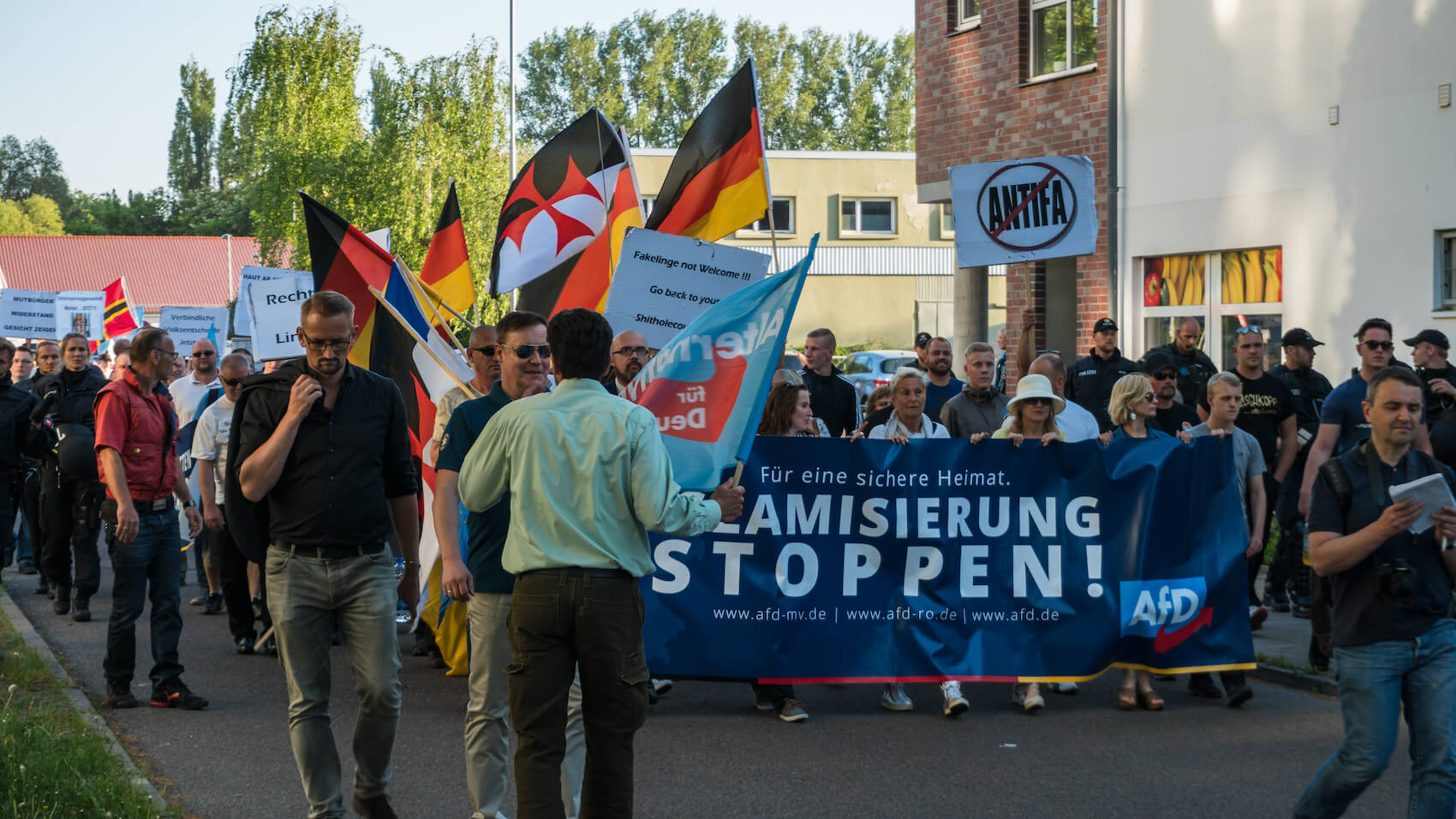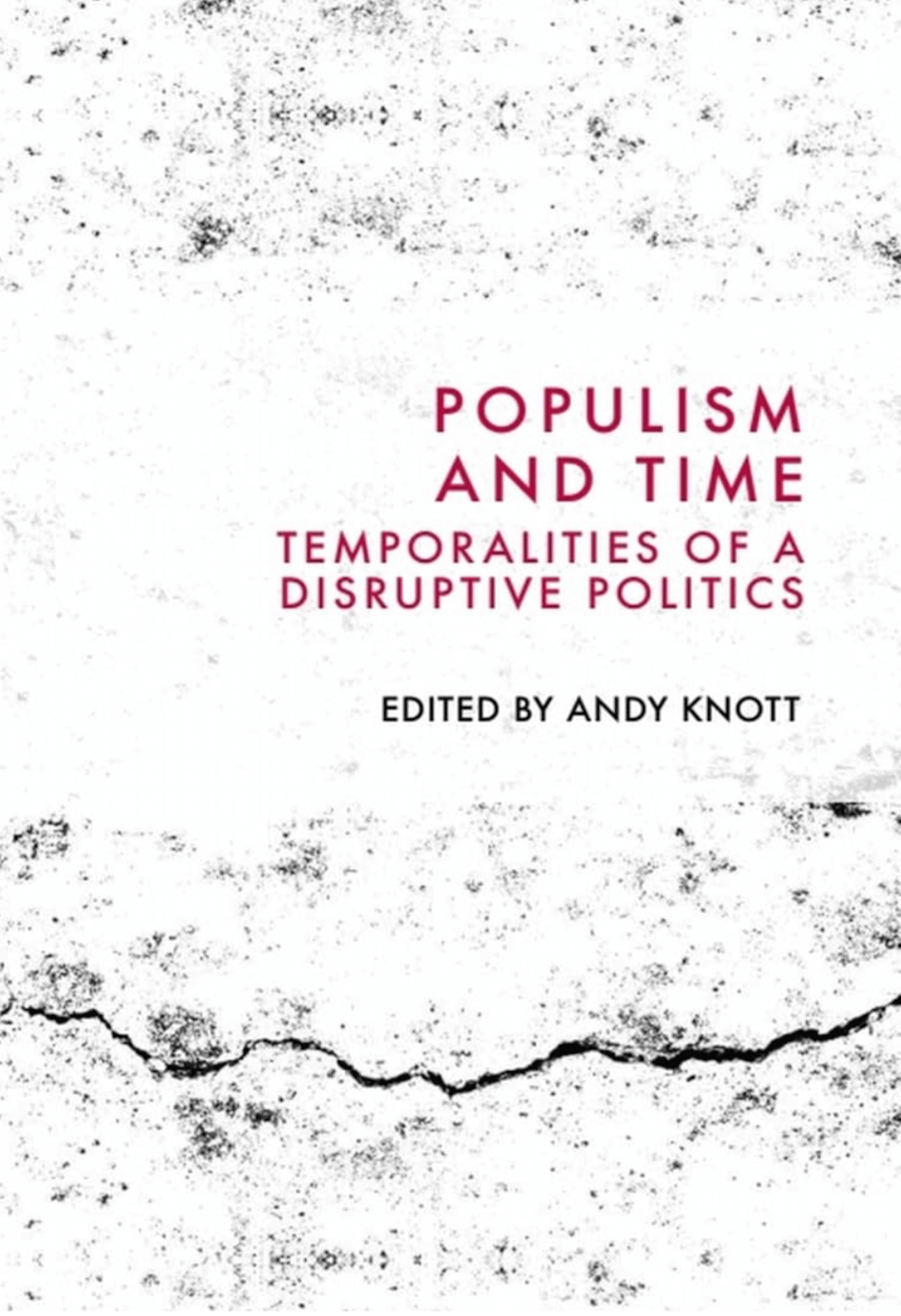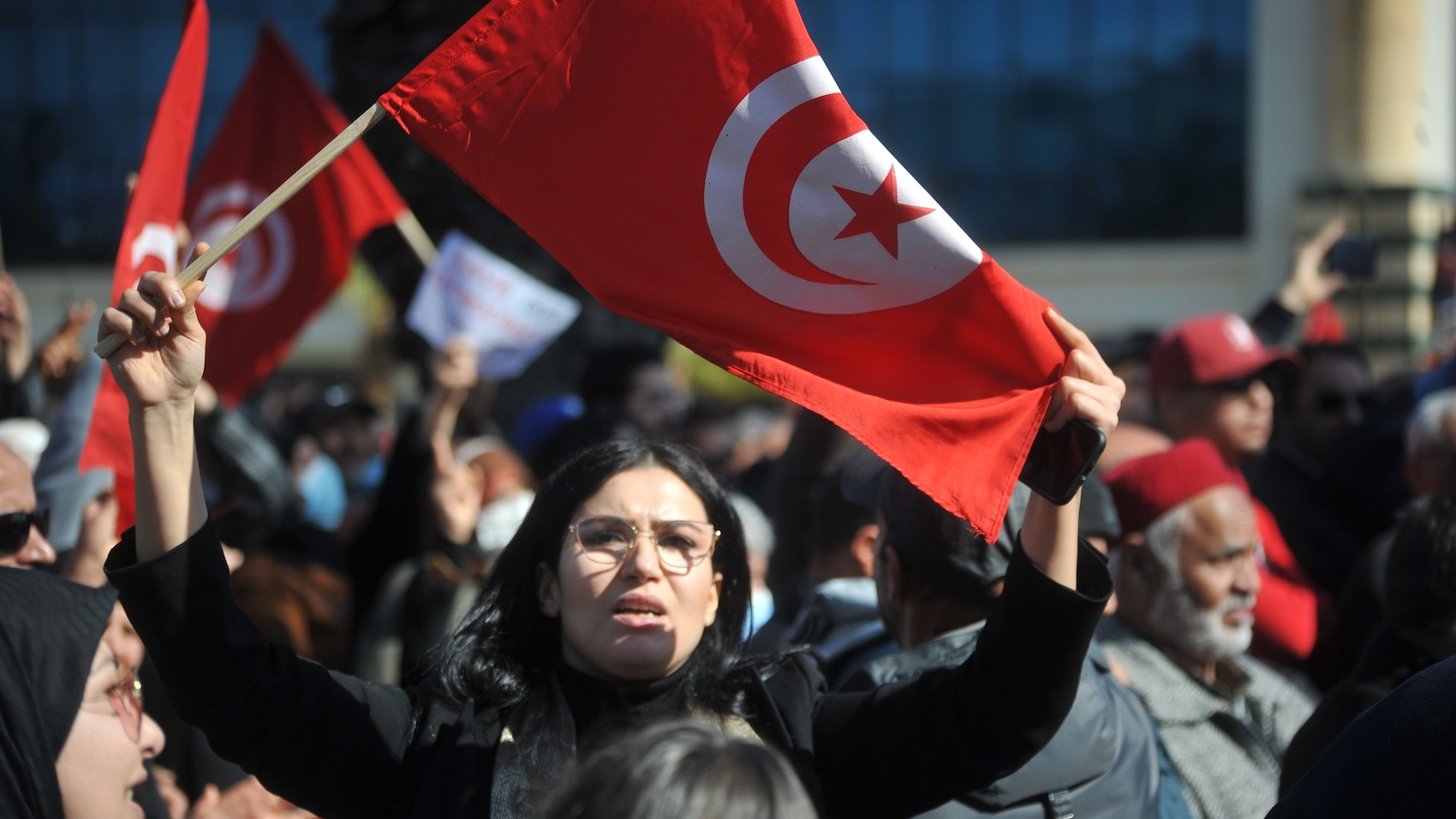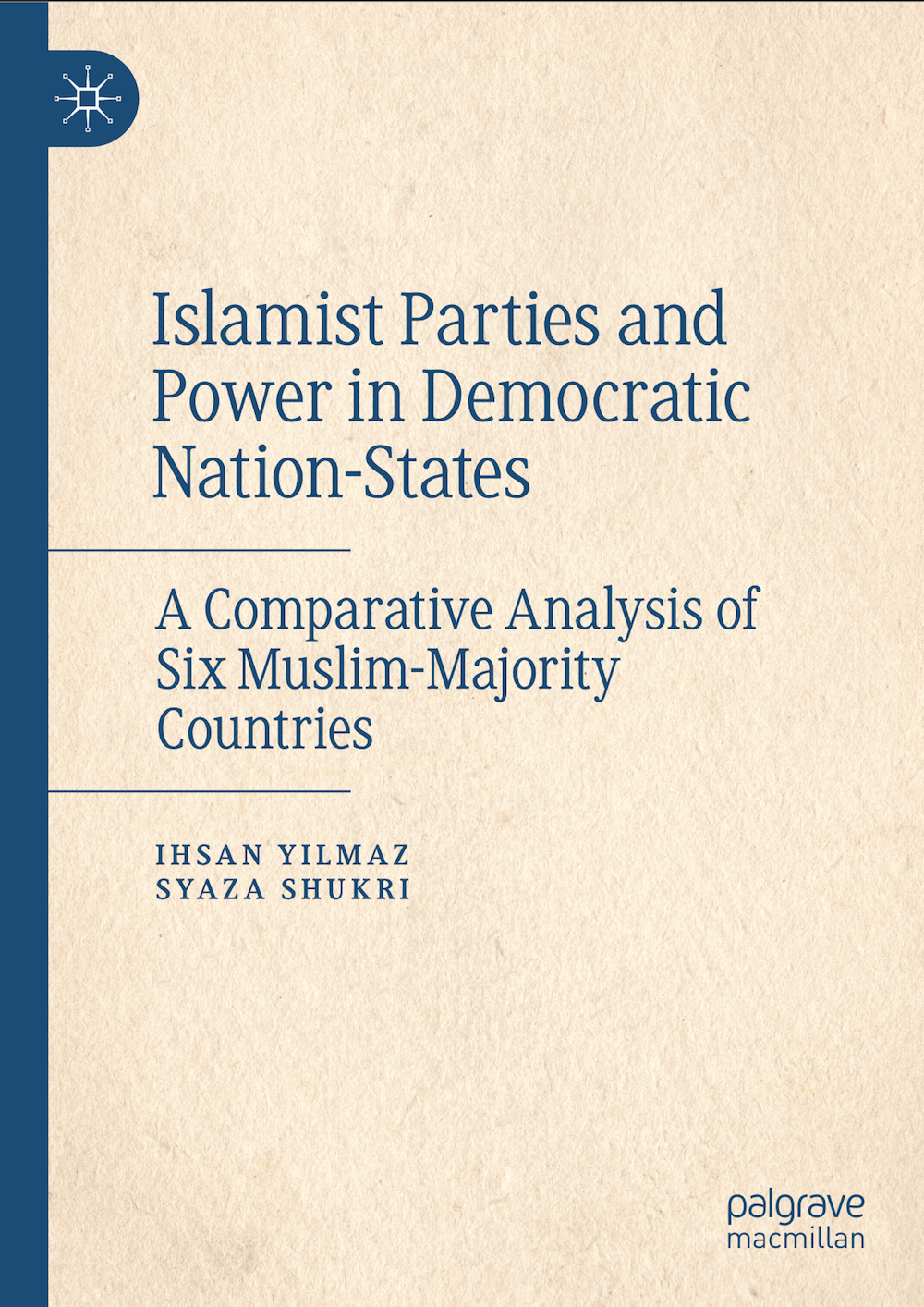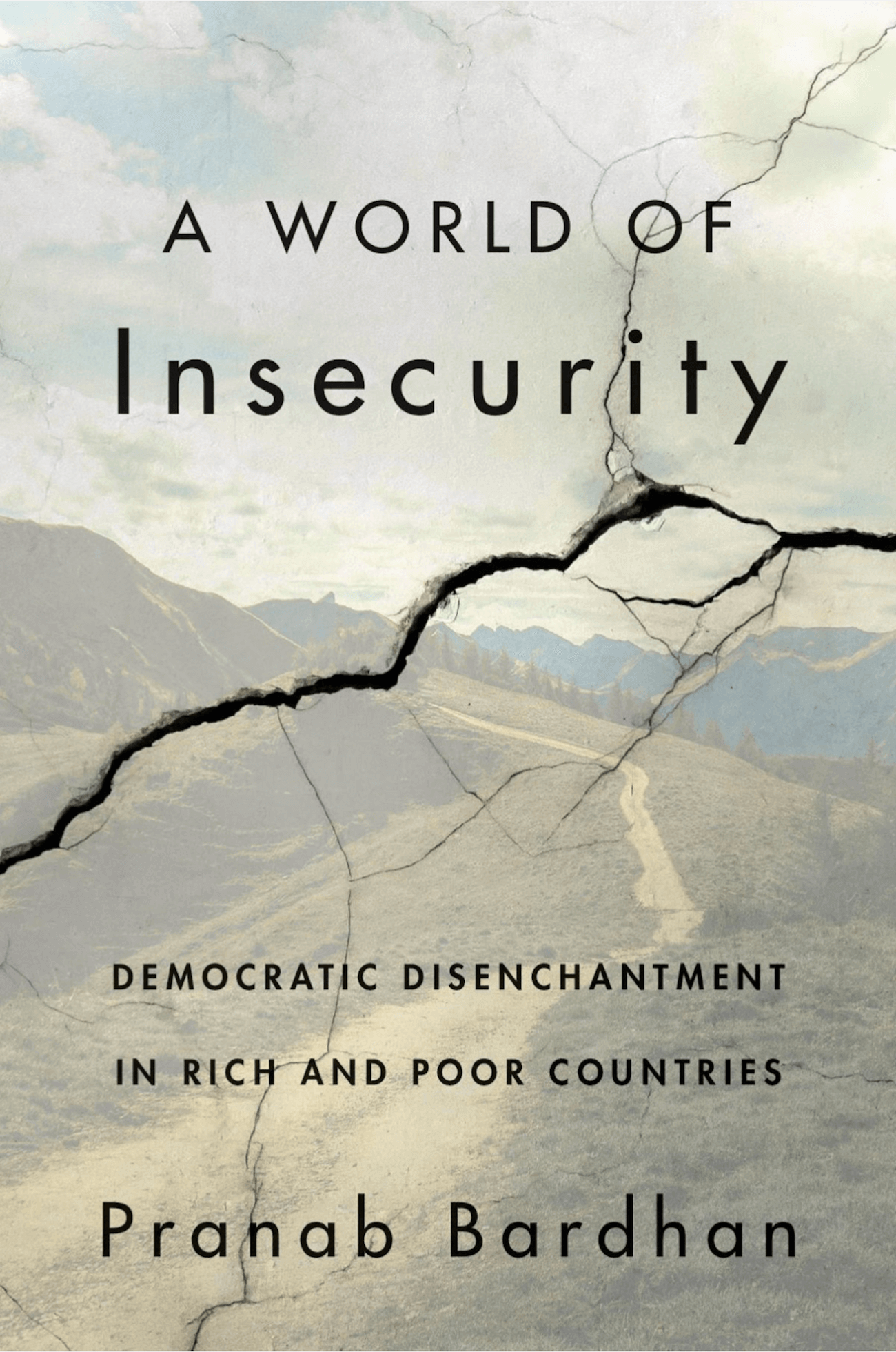DOWNLOAD ARTICLE
Please cite as:
Molnar, Judit. (2024) “Diasporas Intertwined: The Role of Transborder Hungarians in Hungary’s Diaspora Engagement.” Populism & Politics (P&P). European Center for Populism Studies (ECPS). December 20, 2024. Doi: https://doi.org/10.55271/pp0045
Abstract
In the Hungarian context, the term ‘diaspora’ can refer to two types of communities: those formed through emigration and those emerging from the Treaty of Trianon redrawing borders in 1920. While emigrant-diasporas increasingly adopt migration as a political stance, transborder Hungarians’ strong desire to uphold their national identity aligns them with Fidesz’s nationalist narratives. It highlights their potential as agents of Hungary’s emigrant-diaspora outreach. In this paper, I explore how and to what results the two remarkably different experiences of national identity are bridged by Hungary in attempts to revive the historic nation through emigrant-diaspora engagement.
Keywords: nationalism, diaspora politics, transborder Hungarians, emigrant-diaspora outreach, state-led transnationalism
By Judit Molnar*
Introduction
“Fidesz received 94% of the votes of Hungarians outside the borders,” reported the 24.hu online portal after the 2022 Hungarian elections. This statistic might seem surprising for those familiar with recent emigration from Hungary. In response to the autocratic and populist government, which increasingly infringes on democratic principles, politically motivated emigration has slowly but steadily replaced the economic emigration of Hungarians first triggered by the 2008 financial crisis (Sampson, 2021; Örkény, 2018; Moreh, 2014; Ayodele, 2018). Hallmarked by events such as the expulsion of forward-thinking educational institutions like Central European University, the aggressive campaign pushing women into traditional childbearing roles, and severe limitations placed on the LGBTQ community, many Hungarians opted to start a new life abroad driven by a yearning for a more liberal political environment. For this reason, recent Hungarian migrants can be increasingly interpreted as having ‘voted with their feet’, a concept Triandafyllidou and Gropas (2014) used to describe resistance to the regime underlying the decision to leave. As such, the Hungarian communities forming in Western Europe can be seen as counter-diasporas, as highlighted by Szily’s 2018 report, which shows that only 7% of those living in London would vote for Fidesz. Similarly, a 2022 poll by the 21 Research Center involving 5000 Hungarians abroad found that only 11% supported the governing party (Rutai, 2022).
Therefore, it is vital to understand the people behind the 94%. According to Brubaker (1996), there are two types of diasporas: those that result from people crossing borders and those that emerge from borders crossing people. When the Treaty of Trianon that closed World War I in 1920 detached two-thirds of Hungary’s territory and attached them to surrounding countries, many ethnically Hungarian people found themselves under the sovereignty of another state overnight. As Feischmidt (2020: 130) argues, memory politics fuelled by the Trianon cult “became the engine of new forms of nationalism.” In 2004, a national vote was held on whether transborder Hungarians[1] should be granted Hungarian citizenship but failed due to low turnout. Despite this, when Fidesz came to power in 2010, they passed legislation granting dual citizenship to transborder Hungarians, followed by voting rights in 2011. The intergenerational trauma of being separated from Hungary, despite a strong Hungarian identity, made people living on these territories keen to support Fidesz’s nationalist agenda. As such, they became allies of the Orbán government’s nation-building efforts, not least when Fidesz turned its attention to the recently emigrated population through large-scale diaspora outreach.
The past decades have seen growing interest among social scientists in how home countries exert control over their emigrated populations transnationally. State-led transnationalism is defined by Goldring (2002: 64) as “institutionalized national policies and programs that attempt to expand the scope of a national state’s political, economic, social, and moral regulation to include emigrants and their descendants outside the national territory.” While the forms, goals, and extent of such involvement may vary (Levitt, 2001), Portes (1999) emphasizes that state-led transnationalism is driven by economic and political gains from the diaspora, leveraging emigrants’ feelings of belonging to encourage remittances, investment, voting, or lobbying in favour of their home state. According to Margheritis (2007), state-led transnationalism is typically implemented through political discourse that reinforces national ties and recognizes those living abroad as part of the nation. Gamlen (2008) further notes that diaspora narratives empower migrants by constructing transnational collective identities, elevating people who once saw themselves as minorities to being part of a global network.
With half of the world’s states estimated to engage in some form of diaspora outreach (Gamlen et al., 2013), research on diaspora engagement has become a key area of enquiry for the social sciences, which has been conducted with the primary aim of analyzing the contributions emigrants make within such frameworks. However, less attention has been paid to the micro-level implementation of these schemes, including the role of facilitators and the affective responses evoked in the targeted population. These responses are crucial in understanding how autocratic systems relying on populist narratives achieve their goals, as populism depends on provoking relevant emotions. In my ethnographically inspired paper, I focus on incorporating transborder Hungarians in Hungary’s emigrant-diaspora outreach. I am interested in how their cultural identity is used to promote Hungary’s nation-building efforts, what narratives accompany their presence from the side of the home state, and what response this prompts in the emigrant-diasporas. I undertake the enquiry to uncover how the two remarkably different experiences of ethnic identity and connectedness to the homeland amongst transborder Hungarians and emigrants from Hungary are bridged by Hungarian populist discourse in the country’s attempt to govern its diasporas across borders and reconstruct the historic nation. The data used in this paper was collected in London, UK, in 2022/23 and Dublin, Ireland, in 2016/17. All proper names, including those of organizations, are pseudonyms.
‘Hungarians Can Only Be Replaced by Hungarians’
It was my first visit to the Hungarian House, one of London’s longest-standing and most prestigious Hungarian diaspora institutions. The occasion was Whit Sunday, for which a ball with a three-course dinner, folk dancing, and live music had been organized. As I did not know anyone, I booked a randomly assigned seat. Once everyone arrived, we took our places and did a round of introductions. When it was my turn, my short monologue prompted one of my tablemates to jokingly comment: “We can hear from your accent that you are not from beyond the borders, but don’t worry, we will still talk to you.” It was then that I realized that on my table of 14, I was the only person who had migrated from within the current borders of Hungary. As my research unfolded, it became somewhat of an ethnographic commonplace to find transborder Hungarians dominate Hungarian events in London, even though most of them had never lived in Hungary. Some did not even hold Hungarian citizenship. While I initially found their overwhelming participation surprising, it can be explained by the place they have historically occupied in their respective home countries as ethnic minorities. Since the Treaty of Trianon attached two-thirds of Hungary’s territories to surrounding countries in 1920, transborder Hungarians cultivated their Hungarian identity under often oppressive regimes of the bordering countries, which have limited their freedom to practise their culture, most notably through restrictions imposed on the use of their mother tongue. Seeking out the company of other Hungarians for cultural preservation activities has thus become a crucial aspect of their lives. Moreover, they have been the beneficiaries of Hungary’s outreach for much longer than the emigrant population, with many schemes aimed at emigrant-diasporas modelled on initiatives successful in transborder communities.
At the core of diaspora politics is a concept shaped by the state that defines which groups constitute the nation, how co-nationals are connected, and what role the state fulfils in their lives. Verdery (1994) explains that the term ‘nation’ can refer to citizenship comprised of shared sovereignty rooted in political participation. However, it can also denote an ethnic connectedness, whereby a nation consists of individuals sharing a common language, history, or culture. In an ethnic understanding of the nation, political identity is defined by shared language and culture, while in a civic one, by shared citizenship and loyalty to political institutions. Verdery (1998) claims that unlike democratic constitutions in the West, where sovereignty resides with individual citizens, Eastern European constitutions often grant sovereignty to an ethno-nation. Although no state’s borders contain an ethnically uniform population, nations in Eastern Europe have historically been imagined around ethnocultural homogeneity, which members of the nation are expected to maintain. These expectations have often led to political measures, with Hayden (1992) proposing ‘constitutional nationalism’ to describe legal processes that privilege members of an ethno-nation.
Hungary is a clear example of a state that assigns national belonging on an ethnic basis. Since the turnover, there has been a strong emphasis on ethnic similarity as the organizing principle of the nation, with transborder Hungarians playing a crucial role. This was reflected in the 1989 amendment of The Fundamental Law of Hungary, which included a new section on the state’s commitment to them: “Bearing in mind that there is a single Hungarian nation that belongs together, Hungary shall bear responsibility for the fate of transborder Hungarians, and shall facilitate the survival and development of their communities; it shall support their efforts to preserve their Hungarian identity, the assertion of their individual and collective rights, the establishment of their community self-governments, and their prosperity in their native lands, and shall promote their cooperation with each other and with Hungary” (Article D of The Fundamental Law of Hungary).
After Fidesz came to power in 2010 with a clear nationalist agenda, the Constitution and The Fundamental Law of Hungary were amended again to reflect a stronger sense of interconnectedness with Hungarians outside the borders, including transborder Hungarians and emigrants. While the old Constitution already stated that the president of Hungary represents the voice of all the world’s Hungarians inside and outside Hungary (Verdery, 1994), the new documents went further, emphasizing a ‘single Hungarian nation’ that transcends borders. The new Constitution includes the oath “to preserve the intellectual and spiritual unity of our nation torn apart in the storms of the last century” (Körtvélyesi, 2012).
As illustrated by Hungary’s severe response to the refugee crisis of 2015, despite the alarming decrease in Hungary’s population due to outmigration, ageing, and declining birth rates, Hungary seeks to compensate for these numbers exclusively through ethnically Hungarian people. As Viktor Orbán stated at the 9th plenary session of the Hungarian Diaspora Council in 2019, “Hungarians can only be replaced with Hungarians” (kormany.hu). Joppke (2005) argues that right-wing nationalist parties engage co-ethnic populations abroad to counterbalance growing immigration and sustain the dominant national group’s claims over the state. Since 2010, 1374 billion HUF has been spent on national politics (kormany.hu). Notable schemes include the Bethlen Gabor Fund, which provides financial support for transborder and emigrant communities (Kántor, 2014); the Rákóczi camps organized to provide an opportunity for young people in the diaspora to visit the homeland; the Balassi Programme that enables Hungarian language training in Hungary; the Diaspora Scholarship, which brings talented young people of Hungarian roots to Hungary for study; ReConnect Hungary, the Hungarian birthright program; and the Julianus and Mikes Kelemen Programmes, which focus on preserving material culture in the diasporas.
Exemplary Communities of National Consciousness
In 2013, the Hungarian State Secretariat for Nation Policy introduced a new scheme called the Kőrösi Programme, which soon evolved into the flagship project of Hungarian diaspora engagement. Aimed at strengthening national identity in Hungarian emigrant-diasporas worldwide and consolidating ties between Hungary and its population abroad, young intellectuals have been delegated to locations with significant Hungarian populations. The Hungarian state had previously mapped independently emerging ethnic organizations to offer them state-affiliated status, which the facilitators would support. They would be in charge of organizing the community, disseminating knowledge, and conducting educational activities, which include teaching language classes, folk dancing and traditional instruments, facilitating scouting, and organizing events to commemorate national holidays. Facilitators are recruited through a competitive selection process and are required to “possess outstanding professional expertise relevant for the Hungarian diasporas and to have actively engaged in community organizing, traditionalist activities” (website of the Kőrösi Programme, 2018).
Transborder Hungarians have played a crucial role in the Kőrösi Programme. A quick look at the profiles listed on the programme’s website highlights that since its inception, around 60% of facilitators have been from transborder territories each year. Some had never lived in Hungary before their assignment and may struggle to provide in-depth knowledge about contemporary life in Hungary. However, their expertise in traditional cultural forms has often been prioritized, because, as described in the Policy for Hungarian Communities Abroad: Strategic Framework for Hungarian Communities Abroad (2013), transborder Hungarians “to the universal Hungarian culture is invaluable.” Amongst the detached territories, Waterbury (2023: 32) underlines explicitly the role of Transylvania in the nation’s cultural identity, describing the region as having a ‘mythical significance’ to Hungary, considered the ‘cradle’ of Hungarian civilisation […] and the Transylvanian rural Hungarian populations as the makers and carriers of ‘real’, ‘archaic’ and ‘authentic’ Hungarian culture.”
Their adequacy for these tasks was widely acknowledged. In a conversation with the first Kőrösi facilitator sent to Dublin in 2015, she confided in me her sentiment that she would never be as good at the job as transborder Hungarians, although she noted that some of these feelings stemmed from how the state labelled the two groups: “In my opinion, the ideal candidate was [mentions the name of the delegate sent to a different location in the same year of the programme], because on the one hand, she is from Transylvania, so that is somehow important. These days those who are not from Hungary are often considered more Hungarian than us, excuse me for my honesty. But yes, her identity is different from mine as somebody from Budapest. For me it is like I am Hungarian and then what? I am that and full stop. But for her, she and her parents and grandparents all had to fight for it. To keep it alive. So, it is crucial to her identity.”
Pogonyi (2015) argues that, unlike most diaspora schemes globally, Hungary’s outreach to its emigrated population was not devised to mobilize people for political or economic gain but to folklorize the emigrated population to strengthen Fidesz’s nationalist image. Analysing diaspora as a claims-making tool (Brubaker, 2005), Pogonyi defines Hungarian diaspora outreach as a non-instrumental identity project. Its principal goal is to reverse assimilatory tendencies, prevent intermarriage, and promote Hungarian national identification through education programs and a network of institutions reinforcing national identity. This is echoed in the Policy for Hungarian Communities Abroad: Strategic Framework for Hungarian Communities Abroad (2013), which claims that “the borders of the nation stretch as far as the influence of the national institutions, which help maintain the national identity”.
To incentivize Hungarians to (re-)cultivate their Hungarianness, the state has identified transborder Hungarians as indispensable. According to Fidesz’s discourse, transborder Hungarians are the exemplary communities of national consciousness and the kind of ideal citizens that emigrants should aspire to become. While historically, emigrants’ treatment by the Hungarian state went from “fascist criminals, class enemies, and useless, workshy rabble” (Kunz, 1985: 102) in the 1950s and 60s to traitors who placed their well-being above that of the homeland after 1989 (Herner-Kovács, 2014), transborder Hungarians have stayed framed as loyal victim communities. Placing them at the centre of diaspora schemes thus applauds them for preserving national consciousness for over a century despite often repressive circumstances. Hence, their presence communicates the Hungarian state’s expectations to all its citizens abroad.
As Kiss and Barna (n.d.) highlighted in the early 2010s, transborder Hungarians increasingly fail to consider Hungary as the primary destination of their emigration projects and, instead, tend to venture further afield. For people in the transborder territories without European Union membership when Hungary joined the EU in 2004 or under labour movement restrictions like Romanians after accession in 2007, Hungarian citizenship served as a passport to the West. Consequently, a growing number of transborder Hungarians decided to migrate to countries that they perceived as economically more viable than Hungary. Still, once in the country, they often sought out Hungarian diaspora organizations to join for sentimental reasons. It is therefore essential to highlight that while the involvement of transborder Hungarians in diaspora communities generally occurred out of their own will and enthusiasm, their presence is often interpreted through the lens of dominant Fidesz narratives, which influences not only their reception and integration opportunities in the community but also the extent to which their views are welcomed.
My fieldwork revealed that their presence often exacerbated resistance from the emigrant community against the government. On the one hand, they played a cultural revitalization role that was appreciated by families with young children and sensitized Hungarians to the fact that the ability to practise one’s identity, language, and culture should not be taken for granted. However, precisely the fervent practice of culture and strong national identity repelled emigrant Hungarians. Outbursts of appreciation for being Hungarian often made Hungarians from Hungary cringe, with critical remarks about what was commonly perceived as ‘magyarkodás.’ ‘Magyarkodás,’ a word that means the active cultivation of being Hungarian, denotes an overly zealous attitude towards expressing one’s Hungarian cultural identity. My informants saw ‘magyarkodás’ as irritating and something to be avoided, mainly due to its close association with the Orbán government and its expropriation of national symbols.
Such sentiments frequently translated into discriminatory remarks from Hungarians. While they welcomed the transborder Hungarians’ efforts to ensure the continuity of events, they complained that they were pushing them out of an organization that was supposed to be theirs. When I inquired into such feelings, I found that many had held resentment towards transborder Hungarians since their time in Hungary. Common reasons included the feeling that they were taking jobs and opportunities meant for locals, with many believing transborder Hungarian networks were strong and helped them get ahead quickly. Additionally, a large part of the resentment stemmed from the perception that these people received priority treatment from the Hungarian state, which seemed to care more about them than its citizens. For example, when the Hungarian state replaced the beloved priest of the community with a Csángó [ethnic Hungarians of Roman Catholic faith mainly living in the Romanian region of Moldavia] priest, it resulted in tangible resistance from the community, who complained about his unusual choice of Hungarian words, but most of all, his incorporation of nationalist sentiments in his sermons.
During my fieldwork, the Hungarian House was undergoing a slow but steady transition. Originally a refuge for all Hungarians who left their homeland after the World Wars, it became a vibrant place for Hungarian social and religious life since 1956, with the arrival of refugees fleeing the revolution against Soviet occupation. To this day, the leadership primarily consists of people who left Hungary during that time. They hoped to pass on roles to Hungarians who arrived post-accession. Still, since this group enjoyed a transnational lifestyle involving frequent trips home, they did not feel a strong need to cultivate their culture through diaspora organizations. Eventually, the group that took the initiative were transborder Hungarians, much to the dismay of the older generation. According to a transborder Hungarian committee member, the biggest challenge they faced was creating peaceful coexistence with older members, who viewed transborder Hungarians with growing suspicion. Despite this, the Hungarian House inevitably shifted towards becoming a predominantly transborder Hungarian organization, which ensured its continuity and gave it a cultural character that many of my informants from Hungary found hard to identify with.
Tapping the Diaspora’s Political Remittance Potential
On 2nd October 2016, the new Kőrösi facilitator in Dublin organized a memorial walk in the Glendalough mountains to honour Áron Márton, the bishop of Transylvania who dedicated his life to promoting Hungarian culture despite the oppressive Romanian government. As the facilitator came from a region of Serbia with a large ethnic Hungarian population, everybody understood that this commemoration was a project of personal importance to her. However, few understood why the meeting point was in front of the Hungarian Embassy in Dublin. As we later discovered, it was the day of the referendum on vetoing Brussels’ proposal to distribute incoming asylum seekers across the EU. As soon as the cars started arriving, the facilitator would quickly usher everyone into the Embassy, emphasizing that it was the duty of everyone with any national feelings to cast a vote.
Transborder Hungarians and the European Union (EU) represent two opposing poles in Fidesz’s thinking. According to Mudde and Kaltwasser (2017), populism divides society into two homogenous groups: the ‘pure people,’ associated with the nation, and the ‘corrupt elite,’ which hinders the nation’s unity. Populism’s belief that the people’s will is clear fosters authoritarianism and illiberal attacks on perceived threats to national homogeneity. Populist leaders argue that real power lies not with democratically elected officials but with illegitimate forces like organizations and bureaucracies undermining the people’s will. Hungarian populist discourses stem from a fear of external threats to national unity, often framed through the memory of Trianon. Anti-elite sentiments target foreign or supranational institutions, like the EU, frequently blamed for promoting a globalized outlook that conflicts with the national one. Like other xenophobic populists in Europe, Hungary views the EU as representing the interest of ‘aliens’ that threaten the nation’s purity, from which ‘the people’ must be protected. In this logic, if the EU is the villain, transborder Hungarians are glorified as the ‘true’ people who can save the nation.
The Orbán government has long relied on transborder Hungarians for support in national elections and referenda by making voting significantly easier, effectively allowing them to tilt the results. As Herner-Kovács (2020) explains, transborder Hungarians have come to represent a potent political remittance potential to the state as “politically active and organized communities with strong and effective ties to Hungary” (1161). Since they represent a predictable voter base, those with non-resident Hungarian citizenship – and thus the right to vote – have been granted access to letter voting. After Fidesz enabled ethnic Hungarians abroad to apply for citizenship, nearly half a million have benefitted from the opportunity. Patakfalvi-Czirják (2017) argues that this created a moral obligation, and transborder Hungarians’ overwhelming support can be seen as a ‘vote of gratitude.’ Their perceived duty to defend Fidesz became especially evident during the 2022 campaign when the opposition leader was rejected by local representatives of several transborder territories (Bereznay, 2022).
Recent Hungarian emigrants to Western Europe, often perceived as critical of the Orbán regime and likely to vote for the opposition, face limitations in their election participation. In 2022, Hungarians in the United Kingdom were restricted to only three polling locations despite the 15 that the community lobbied for (Czinkóczi 2022), which meant a 1000-kilometre journey for some voters. Outraged by these arrangements, the Hungarian diaspora self-organized itself to fundraise money to support the travel costs of those who wanted to vote but could not afford to travel. The discrepancy between the opportunities given to transborder communities and emigrant-diasporas to exercise their democratic rights is apparent. This led Waterbury (2023: 1) to assert that the “2022 Hungarian parliamentary election highlights the phenomenon of competing external demoi, a situation that emerges when an incumbent government differentially enfranchises and mobilizes different external national communities for electoral purposes, thus triggering a competing mobilization of external voters by nonincumbent political actors.”
Incidents of transborder Hungarians incentivizing emigrant-diaspora members to vote have not been well received among the emigrant-diasporas. The unequal arrangements have generated feelings of jealousy and a sentiment that the Hungarian state prioritizes transborder Hungarians’ preferences about the direction in which the country is headed. Hungarians from Hungary find it unfair that people who may have never lived in Hungary would decide on issues affecting those living there. Among the emigrant-diaspora in London, three attitudes emerged toward voting. Some stated that they did not want to impact the outcome since they had committed to the UK. Though not planning to return, others felt responsible for the fate of their families and friends still in the country and found it important to vote. The third group insisted on voting, emphasizing that they would consider the return if Fidesz lost power. As such, to make sense of Fidesz’s overwhelming victory in the 2022 elections, a frequently uttered evaluation amongst emigrant Hungarians was that ‘Hungarians had no chance as the transborder Hungarian allies of Orbán decided the outcome,’ even if, their numbers are too small to have a significant impact.
‘The Carpathian Basin Coming Together’
Frigyes was impossible to miss in the Hungarian community in Dublin, not only because his manners were reminiscent of early 20th-century Hungarian novels – a literary period that inspired him greatly. Having initially migrated for economic reasons from the Hungarian-speaking region of Slovakia, Frigyes spent nearly a decade in low-paid service jobs, but eventually, he decided it was time to reap the benefits of his hard work: he registered as unemployed and committed himself entirely to the diaspora community. His enthusiasm was driven by a sense of finally being recognized as Hungarian after having experienced repression as a minority in Slovakia and as inferior in Hungary: “Borders have disappeared. It is a huge thing that for example at the [mentions specific event in Dublin] there are almost as many people from the transborder territories like from the mother country. […] Here, the fact that everybody is Hungarian is so natural that it is not even a question. Just like it is evident for you that you are Hungarian, not a question and is something that you take for granted. For me, it is a huge thing to see the Carpathian basin coming together, that the nation has come together and to see that this is not something unimaginable, but something that can actually function.”
Once facilitators began arriving in his community, Frigyes recognized himself as a Kőrösi facilitator: having dedicated years to supporting the diaspora community in Dublin, he was confident that he could excel at the task and thus decided to apply for the position. The application process was not straightforward, as it required first acquiring Hungarian citizenship, which posed a challenge. Slovakia, in opposition to Hungary’s policy of granting citizenship to transborder Hungarians, did not recognize dual citizenship. Despite this, Frigyes was determined and, in a bold move, gave up his Slovakian citizenship. Although he hoped to be assigned back to Ireland, he was open to taking on the role in any Hungarian diaspora community worldwide, indicating that his commitment was ultimately not to his host country but to the newfound freedom to be Hungarian fostered by emigrant-diaspora spaces. Shortly after, another transborder Hungarian from the Dublin diaspora followed suit and stayed in the job with her assigned community ever since.
Transborder Hungarians thrived in every diaspora community I studied, often attributing their success to the emigrant-diaspora space, which allowed them to express their Hungarian identity fully. Placing a great emphasis on national identity and cultural practices, they regularly attended diaspora events, which they described as giving them a sense of integration into the nation for the first time. Although some had spent much of their lives in Hungary, they described facing xenophobia and resistance from locals. One participant explained that identities are born out of people’s need to differentiate themselves from the people around them based on the ‘us vs them’ formula. Nonetheless, as the population of Hungary is relatively homogenous, there is not much option to create such distinctions. Therefore, as he put it, discrimination is often not based on fundamental differences but on perceptions that “paint one with the colours of the nation and the other one with the colours of distance.” In Ireland, however, where all Hungarians became a minority, it was a natural instinct to come together to maintain their identity, forming a unified community. While many transborder Hungarians initially arrived in Ireland to return to Hungary, their participation in the diaspora led them to reconsider that intention, as their connection to the home community conflicted with the fulfilment that emerged from being part of a cohesive Hungarian group abroad.
Rooted in this experience, in Ireland, transborder Hungarians felt that with their presence, they were actively contributing to a new definition of national unity, which involved the spreading of irredentist ideologies. As one of my participants explained, she had plans to bring her experience back home to Transylvania, but she often felt side-tracked by feelings experienced in her diaspora community. She explained, “They seem to like the thought of big Hungary and appreciate people from these territories a lot. And I find it fantastic to get this feeling. I always get goosebumps”—such processes aligned with Fidesz’s agenda. As Lowe and Peto (2013) emphasize, irredentist narratives are forever present in modern Hungarian politics. While Orbán has never specifically claimed to intend to re-attach the lost territories to Hungary, he consistently peeves neighbouring countries with the close ties he maintains with transborder Hungarians, not least by designating 4th June – the anniversary of the Treaty of Trianon – as a ‘day of national unity.’ Lowe and Peto also note that Hungarian everyday life is scattered with allusions to the detached territories inherently belonging to Hungary, including the generalised use of the term ‘mai Románia területén’ [on the territory of current-day Romania] and weather forecasts showing temperatures for the detached territories. As Sava (2020) further illustrates, since 2018, Hungary has also opposed Europe’s celebration of the end of the two World Wars as moments of reconciliation and European integration, instead hoarding resentment against Western states for letting the Trianon Treaty happen.
At the New Year’s Eve ball at the Hungarian House, as the clock struck midnight, three anthems played to usher in the New Year: The Hungarian national anthem, the British national anthem, and finally, the anthem of the Székely people, an ethnic Hungarian group primarily living in Harghita, Covasna, and Mureș counties of Romania. I was already accustomed to hearing this anthem at Hungarian church services, so I did not question its inclusion in such an event. However, a fellow participant was visibly confused and asked, “What is this? Is this something from here? I’ve never heard it before!” When another person explained what it was, the first person sighed and made a face, clearly disapproving of the choice. When I inquired with the operating director of the event, he explained that the decision was personal, as he felt the anthem was meaningful and dear to many attendees. Other transborder Hungarian attendees justified the inclusion by referring to Fidesz’s decision to replace the European Union flag with the Székely flag on the National Parliament—an act many Hungarians from Hungary saw as provocative and irredentist. The incident highlighted the complex dynamic that Hungarian diaspora members often faced. By practicing their culture at the Hungarian House, they were forced to navigate the delicate balance between balancing a cosmopolitan European identity, which had helped their integration into the UK, and the growing nationalist and irredentist sentiments within the diaspora community, which suddenly seemed like a pre-condition to keeping their traditions alive.
Conclusion
Populism is a tool of isolation that works well with the restrictive ideologies of nationalism as illustrated by the recent political processes unfolding in Hungary. Nationalism centres on the nation as a community with shared values, culture, and identity and emphasizes the importance of sovereignty and independence. It frames the country as being threatened by external or internal forces, such as immigration, foreign influence, or globalization, to which the antidote is people loyal to the nation-building process through their insistence on the practice and preservation of the authentic culture pertinent to the nation. In the Hungarian context, Fidesz has identified transborder Hungarians as key allies for their patriotic feelings regarding Hungarian culture that evolved due to a century’s worth of being a minority.
In this paper, I enquired into one specific context in which their help in promoting nationalist narratives was relied on, namely the diaspora outreach programmes of the Hungarian state targeting recently emigrated Hungarians to the West of Europe. In line with the goals of diaspora engagement, their involvement was aimed to boost nationalist pride and cultivate Hungarian culture, incentivize voting behaviour on the side of Fidesz, and an irredentist approach. Further to the government being invested in mobilizing transborder Hungarians for such purposes, what enhanced their collaboration was that these people found a unique haven of identity preservation in emigrant-diasporas. In London and Dublin, transborder Hungarians thrived in emigrant-diaspora communities, primarily due to the deterritorialised nature of diaspora spaces. The territorial detachment from their country of origin and from Hungary rid them of the resistance of the states whose territories they used to reside on and the resistance of Hungarians in Hungary, who often perceived them as unwanted migrants. While, on the one hand, this new space empowered them to cultivate their Hungarian identity without limitations, at the same time, it reinforced their alignment with the Hungarian state’s goals: regardless of whether they supported Fidesz, their participation took places within dominant Fidesz narratives and as such, through their presence, Fidesz found a way to penetrate emigrant-diaspora spaces.
Nonetheless, the response was mixed. While the two communities studied were geographically not too far apart, the context differed: the Irish diaspora community in 2016/17 consisted of recent emigrants who were only trying to find their feet in the country. Most of these emigrants identified as economic migrants with plans to return. Thus, they were keen to stay in touch with their Hungarian roots and identified membership in the community of compatriots as a pre-condition to their success in the country. As such, the atmosphere in diaspora spaces was more community-oriented and forgiving of differences. However, in the case of the Hungarian House in London, which principally emerged out of political migration, people were less welcoming of state narratives and often penalized individuals who were seen to represent the home state’s ideologies. Nonetheless, in a community where most people lived transnational lives and felt equally invested in their host country, transborder Hungarians were often the only people motivated enough to invest time into keeping the community of Hungarians alive. By taking on such roles, they were transforming the very texture of what being part of an emigrant-diaspora meant: spaces of political resistance transformed into venues expressing nationalistic sentiments, reproducing Fidesz’s narratives. While on the surface, aligning transborder Hungarians with Hungarian diaspora outreach highlights a clever political move, it remains to be seen what impact this strategy can achieve. From the evidence gathered, it seemed that the long-term effect might be counter-productive and might result in the withdrawal of Hungarians from spaces dedicated to the preservation of Hungarian culture as they increasingly fail to identify with the state-led processes unfolding in them, thus undermining the very goal of diaspora outreach.
(*) Judit Molnar is a PhD researcher of Anthropology at the University of Oxford, where her research focuses on the correlations between home state ideologies and the cultivation of diaspora subjectivity amongst first-generation Hungarian and Venezuelan migrants to London, the United Kingdom. Judit holds a research Master’s in Cultural and Social Anthropology from the University of Vienna and another Master’s in Cultural Studies from the University of St Andrews. Judit has engaged with Hungarian diasporas in Ireland, Argentina, and the United Kingdom. Before coming to Oxford, she was a diaspora facilitator of the Hungarian State Secretariat for Nation Policy. She has also worked with the UN’s International Organization for Migration, focusing on the Venezuelan migration crisis, and the European Commission’s Cabinet for Education, Culture, Youth and Sport, researching ways to foster a pan-European identity.
References
Article D of The Fundamental Law of Hungary. (2018). Website of the Hungarian Government. Accessed September 22, 2018. http://www.keh.hu/the_fundamental_law/1536-The_fundamental_law_of_Hungary*&pnr=2
Ayodele, I. B. (2018) “Should We Exit Before Brexit?” Hungarian Workers’ Experiences & Future Plans in Post-Referendum Britain. ProQuest Dissertations & Theses. Accessed December 17, 2024. https://www-proquest-com.ezproxy-prd.bodleian.ox.ac.uk/intermediateredirectforezproxy
Bereznay, I. (2022). Márki-Zay Pétert nem fogadják a székelyföldi politikusok [Márki-Zay Péter was Not Welcome by Politicians of Székelyland]. Accessed December 17, 2024. https://index.hu/kulfold/2022/02/04/marki-zay-peter-erdely-rmdsz-nyilt-level-valasztas-ellenzek-kampany/
Brah, A. (1996). Cartographies of Diaspora: Contesting Identities. New York: Routledge.
Brubaker, R. (1996). Nationalism Reframed: Nationhood and the Nationalism Question in the New Europe. Cambridge: Cambridge University Press.
Brubaker, R. (2005). The ‘Diaspora’ Diaspora. Ethnic and Racial Studies 28(1): 1-19.
Czinkóczi, S. (2022). Nem tervez újabb szavazóköröket nyitni Angliában és Németországban a Nemzeti Választási Iroda [The National Election Office is Not Planning to Open New Constituencies in England and Germany]. Accessed December 17, 2024. https://444.hu/2022/01/17/nem-tervez-ujabb-szavazokoroket-nyitni-angliaban-es-nemetorszagban-a-nemzeti-valasztasi-iroda.
Feischmidt M. (2020). Memory-Politics and Neonationalism: Trianon as Mythomoteur. Nationalities Papers 48(1):130-143.
Gamlen, A. (2008). Why Engage Diasporas? Working Paper 63, Centre on Migration, Policy and Society (COMPAS): University of Oxford.
Gamlen, A., M. Cummings, P.M. Vaaler, and L. Rossouw. (2013) Explaining the Rise of Diaspora Institutions. International Migration Institute of the University of Oxford, Working Paper 78.
Gazsó, D. (2017). A Diaszpóra Tudományos Megközelítése. [A Scientific Approach to Diasporas]. Kőrösi Csoma Sándor Program. Accessed June 1, 2018. https://www.korosiprogram.hu/diaszpora.
Goldring, L. (2002). The Mexican State and Transmigrant Organisations: Negotiating the Boundaries or Membership and Participation. Latin American Research Review 37 (3): 55-99.
Hayden, R. (1992). Constitutional Nationalism in the Formerly Yugoslav Republics. Slavic Review 51: 654–673.
Herner-Kovács, E. (2014). Nation Building Extended: Hungarian Diaspora Politics. Minority Research 17: 55–67.
Herner-Kovács, E. (2020). Direct and Indirect Political Remittances of the Transnational Engagement of Hungarian Kin-minorities and Diaspora Communities. Journal of Ethnic and Migration Studies 46(6): 1146–1165.
Joppke, C. 2005. Selecting by Origin: Ethnic Migration in the Liberal State. Cambridge: Harvard University Press.
Kántor, Z. (2014). Hungary’s Kin-State Politics, 2010–2014. Minority Studies 17: 23-32.
Kiss, T. and Barna, G. (n.d). Erdélyi Magyarok a Magyaroszági és a Román Politikai Térben. [Transylvanian Hungarians in the Hungarian and Romanian Political Space] Working Paper 50. Romanian Minority Studites.
Körtvélyesi, Z. (2012). From ‘We the People’ to ‘We the Nation. In: Gábor Attila, T. (Ed.), Constitution for a Disunited Nation. Hungary’s New Fundamental Law. Budapest: Central European University Press.
Kőrösi Programme. (n.d.) Accessed December 17, 2024. https://www.korosiprogram.hu/
Kunz, E. F. (1985). The Hungarians in Australia. Melbourne: AE Press.
Levitt, P. (2001). Transnational Migration: Taking Stock and Future Decisions. Global Networks 1(3): 195-216.
Lowe, C. and Peto, S. (2013). Hungarian PM Urges Ethnic Kin, Scattered by History, to Unite. Accessed 13th May 2024. https://www.reuters.com/article/idUSBRE96Q075/
Margheritis, A. (2007). State-led Transnationalism and Migration: Reaching out to the Argentine Community in Spain. Global Networks 7 (1): 87-106.
Ministry of Public Administration and Justice. State Secretariat for Hungarian Communities Abroad. Policy for Hungarian Communities Abroad: Strategic Framework for Hungarian Communities Abroad. 2016. Bethlen Gábor Alapkezelő Zrt. Accessed June 23, 2018. http://bgazrt.hu/_files/NPKI/Jogszab%C3%A1ly/policy_2013.pdf.
Moreh, C. (2014). A Decade of Membership: Hungarian Post-Accession Mobility to the United Kingdom. Central and Eastern European Migration Review 3(2): 79-104.
Mudde, C and Kaltwasser, C. R. (2017). Populism: A Very Short Introduction. New York: Oxford University Press.
Örkény, A. (2018). The Population Was “Frozen”: Why Hungarians Started Migrating. Accessed December 17, 2024. https://www.greeneuropeanjournal.eu/the-population-was-frozen-why-hungarians-started-migrating/
Patakfalvi-Czirják, Á. (2017). A vokssal kifejezett hála – Választás határok nélkül [Gratitude Expressed through Votes – Elections without Borders]. Accessed December 17, 2024. https://merce.hu/2017/10/29/a-vokssal-kifejezett-hala-valasztas-hatarok-nelkul/
Pogonyi, Sz. (2015). Transborder Kin-minority as Symbolic Resource in Hungary. Journal on Ethnopolitics and Minority Issues in Europe 14(3): 73-98.
Portes, A. (1999). Conclusion: Towards a New World – The Origins and Effects of Transnational Activities. Ethnic and Racial Studies 22 (2): 463-77.
Rutai, L. (2022). A Tale of Two Diasporas: The Battle For Hungarian Voters Abroad. Accessed December 17, 2024. https://www.rferl.org/a/hungary-election-diaspora-orban-marki-zay/31712662.html.
Sampson, F. (2021). Orban’s Hungary: Lack of Freedoms Becoming the Motivation for Hungarian Emigration. CUNY Academic Works: Unpublished Master’s Dissertation.
Sava, I. N. (2020). From Political Nostalgia to Cultural Trauma? Hungary’s European Dilemma a Hundred Years After Trianon. Revue de Transylvanie 29(3): 42-53.
Szily, L. (2018). Londonban kábé 3/4-e lett volna egy Jobbik-LMP-Momentum-kormánynak [In London, a Jobbik-LMP-Momentum Government would have Received 3/4 of the Votes]. Accessed December 17, 2024. https://444.hu/2018/04/10/londonban-kabe-34-e-lett-volna-egy-jobbik-lmp-momentum-kormanynak.
Triandafyllidou, A. and Ruby G. (2014). ‘Voting With Their Feet’: Highly Skilled Emigrants From Southern Europe. The American Behavioral Scientist 5(12): 1614–1633.
Ungvary, K. (2023). Trianon és Revíziója. [Trianon and its Revision]. Accessed 12 March 2024. https://www.youtube.com/watch?v=9o0hrO8eef0
Verdery, K. (1994). Beyond the Nation in Eastern Europe. Social Text 38: 1–19.
Verdery, K. (1998). Transnationalism, Nationalism, Citizenship, and Property: Eastern Europe Since 1989. American Ethnologist 25(2): 291–306.
Waterbury, M. A. (2010). Between State and Nation: Diaspora Politics and Kin-state Nationalism in Hungary. New York: Palgrave Macmillan.
Waterbury, M. A. (2023). Competing External Demoi and Differential Enfranchisement: The Case of the 2022 Hungarian Election. Ethnicities Vol. 0(0): 1–22.
Website of the Hungarian Government (2019) We Are Anti-immigration Because Hungarians Can Only Be Replaced with Hungarians. Accessed December 17, 2024. https://2015-2019.kormany.hu/en/the-prime-minister/news/we-are-anti-immigration-because-hungarians-can-only-be-replaced-with-hungarians
[1] In academic literature, the term ‘kin-state minorities’ is also frequently employed.




